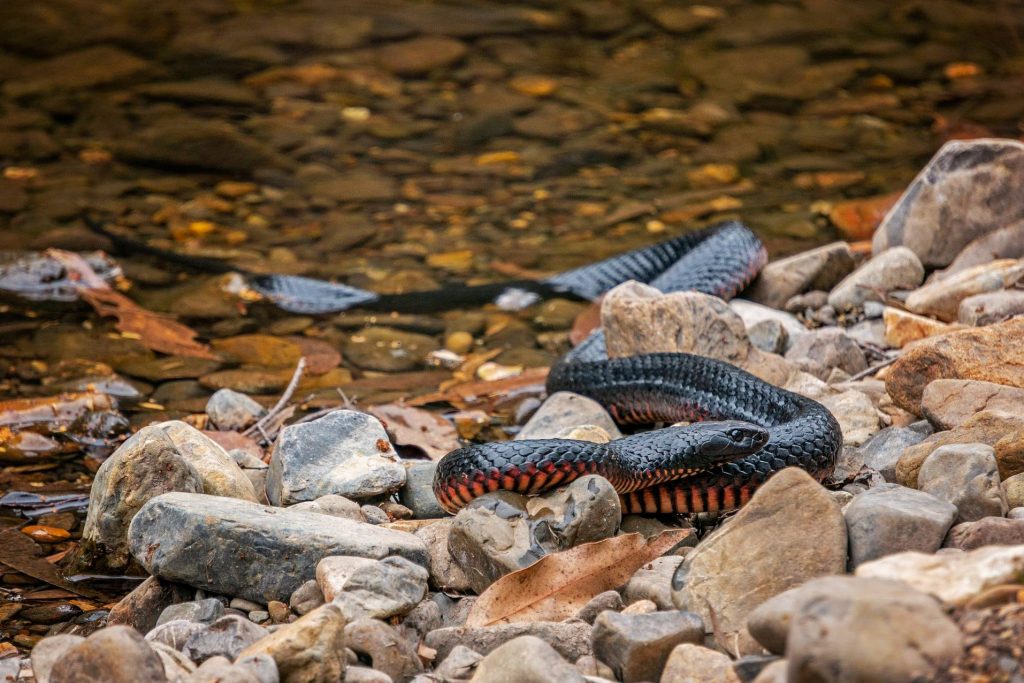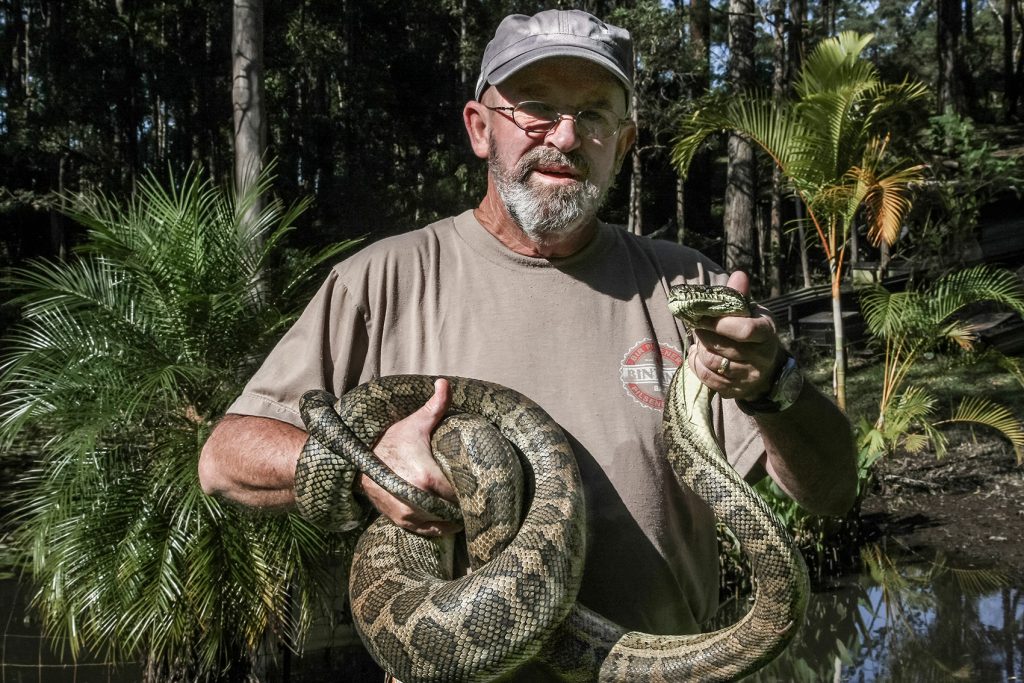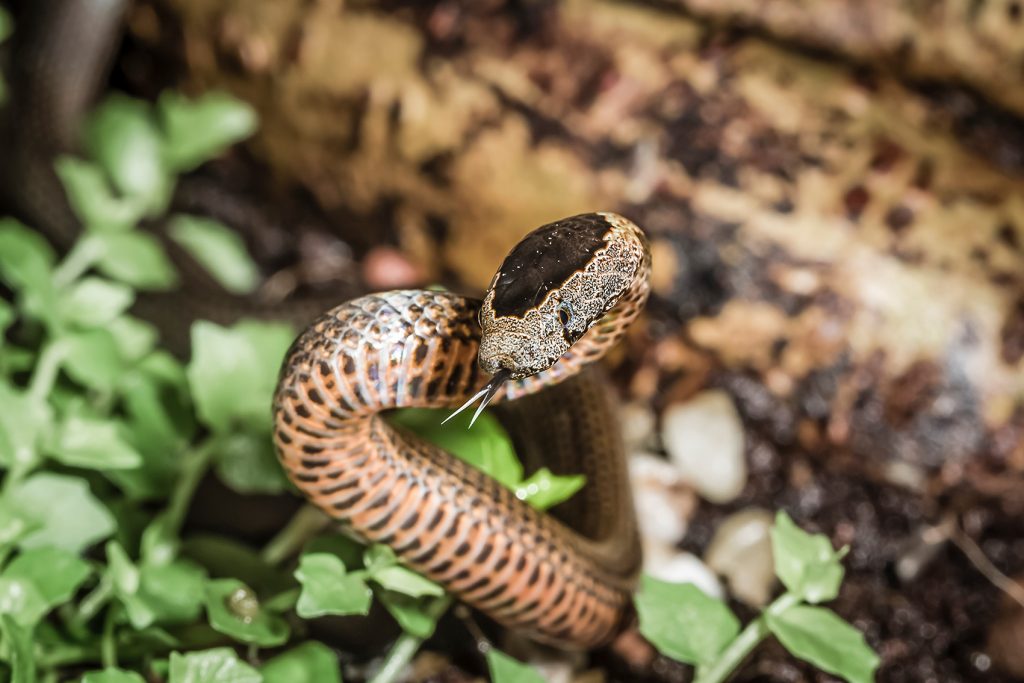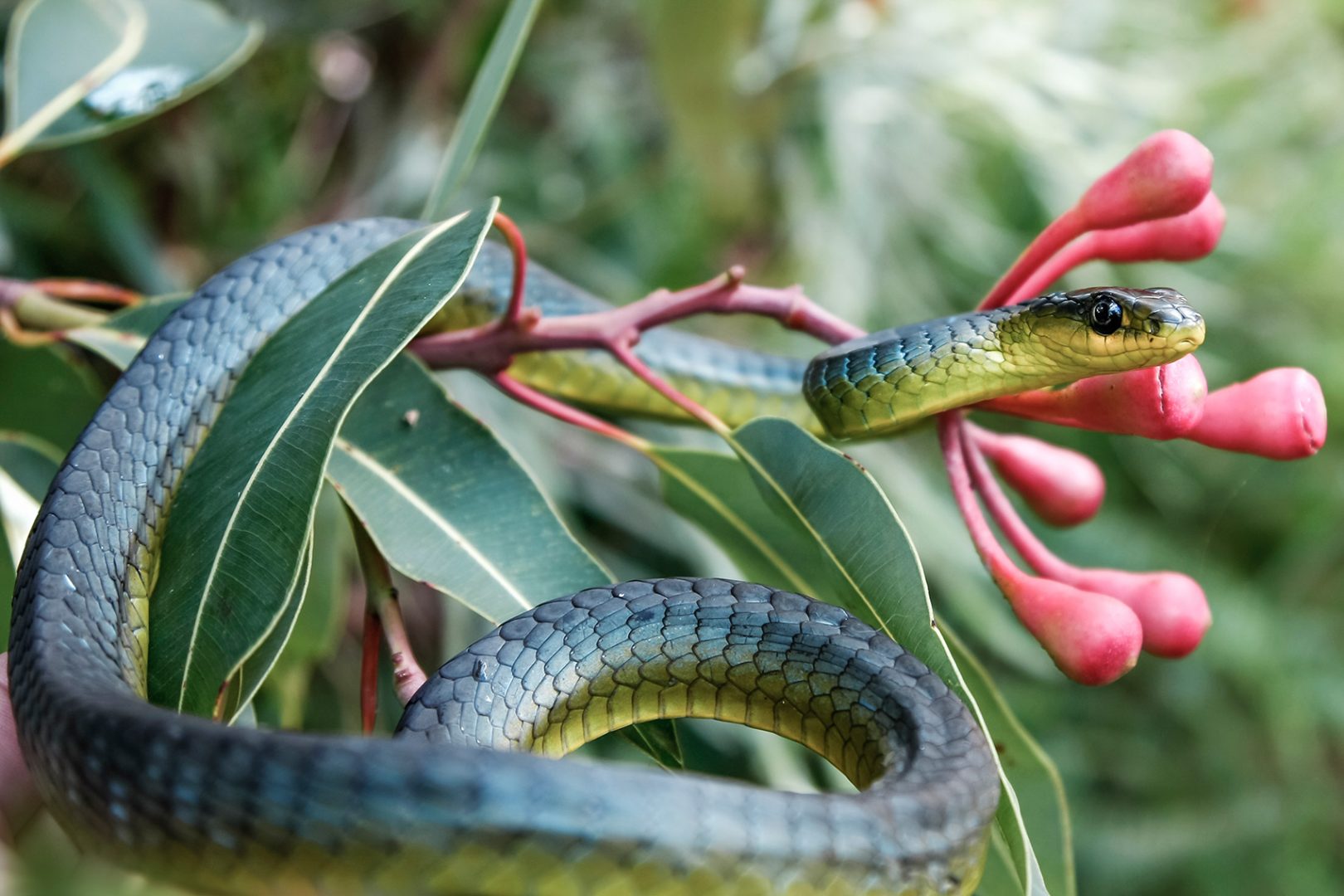Snakes this Summer – The Dos and Don’ts
Self-described ‘citizen scientist’ Norm Farmer is fascinated by snakes, spiders, birds and invertebrates. In his spare time, the Emerald Beach local studies creatures great and small and takes stunning photographs of them. Keen to tap Norm’s extensive knowledge, Coastbeat asked him for advice on coexisting peacefully with snakes.
Cb: What are snakes up to at the moment?
They’re very active at this time of year after resting in the cooler months so you’re likely to see them out and about. They’re typically hungry and looking for love. A lot of the snakes that we find around the north coast – like the red-bellied black snake – like to eat frogs.
As we haven’t had much rain, they have to look a little further than usual and could easily end up in your backyard or garden, especially around ponds and water features. Green tree snakes are always looking for frogs in people’s gardens, but they’re not venomous at all. If they bite you, you’d be no worse off than if you’d pricked your finger on a needle.

Red-bellied black snake image by Brett Vercoe
Cb: What should you do if you see a snake?
You should react the same way to all snakes – leave them alone and walk away. Most snakes are usually quite scared of humans. Australian snakes haven’t evolved with a lot of predators, so when they see something big walking towards them, they tend to be pretty alarmed. The first thing they want to do is get away.
The eastern brown is the most dangerous snake on the north coast – it has the most toxic venom and presents the most danger – but even browns just want to get away from you. They don’t have very good eyesight, but they know when something’s approaching them. They go into a defensive position and will try to alarm you by sticking their heads up and flaring their necks. They’re ready to bite you but if you move away, they’re often relieved. It’s a different story if you’re trying to kill them – they’ll try to fight back. So that’s why I say the best thing you can do is leave them alone.
Cb: What if you accidentally step on a snake?
In that case, they’re likely to bite. I know that if somebody stepped on me, I’d probably turn around and bite them too! However, when they’re frightened of you and they bite, it’s typically just a defensive bite. Having said that, some of them will definitely inject venom. But for the vast majority, it tends to be very little venom. 90% of the time, people are not envenomed. There’s usually a little bit of venom on the surface of the wound. That’s why it’s important not to do those old-fashioned things like cut the wound or try to suck the venom out. Whether or not you think the snake has injected its venom, you should go to the hospital. Every time, without exception.

Norm Farmer holding a Coastal Carpet Python
Cb: Should you attempt to catch or identify the snake?
A lot of people used to think you had to kill the snake and take it to the hospital, so they could be sure about the type of snake that bit you. That really isn’t necessary anymore as a swab is taken from the bite site to work it out. As a matter of fact, if you try to catch or kill the snake you’ll probably get bitten again.
Snakes are often misidentified. It’s very easy to confuse a baby brown snake as they’re born with varying patterns, stripes and markings. I’ve seen hatches of baby browns where each one has a different pattern and a different colour. As they get bigger, they tend to be more uniform in colour. But as juveniles, they look like other snakes, snakes that aren’t as dangerous. That’s why it’s so important to go to hospital if you think you’ve been bitten.

Golden crowned snake (Cacophis squamulosus)
What to do if you’re bitten by a snake
- Call an ambulance immediately. If possible, get someone to do it for you so you don’t have to run to find a phone.
- Don’t move and try to stay calm. I know that’s easier said than done, but this point is so important. Snake venom tends to be transported around the body through the lymphatic system which relies on muscle movement. Not moving might save your life!
- Immobilize the bite site and wrap a pressure bandage around it. I carry a snake bite kit which you can buy from the chemist or online. It’s really simple – just a stretch bandage. They have patterns on them and as the pattern stretches, you know that it’s on tight enough.
- Don’t wash, cut or suck the bite. These old-fashioned techniques can actually make things worse.
- Get to a hospital ASAP. A doctor or nurse will typically take a swab of the bite site to determine whether or not you have been envenomed, then treat you with anti- venom.
Learn the Pressure Immobilisation Technique via Australia Wide First Aid
Do you love wildlife just like Norm? Check out these articles about other coastal inhabitants such as sharks, turtles, seals and even Tasmanian Devils.



